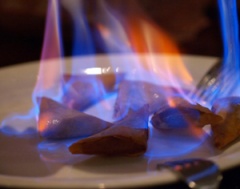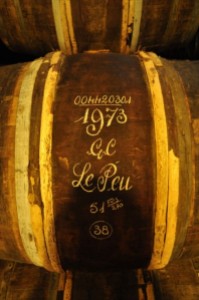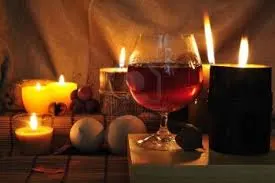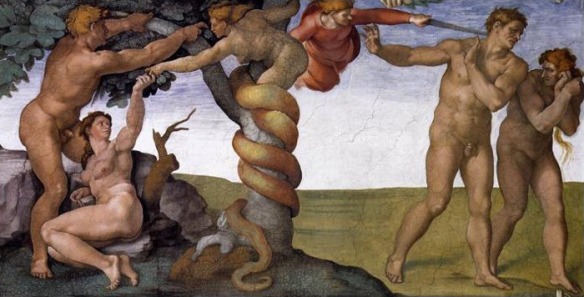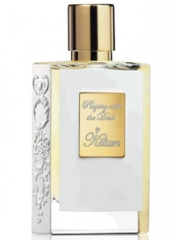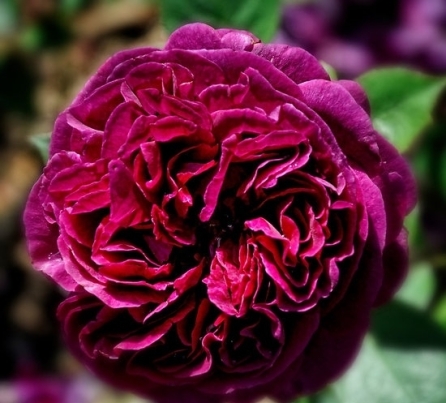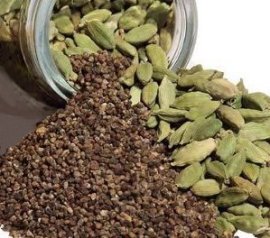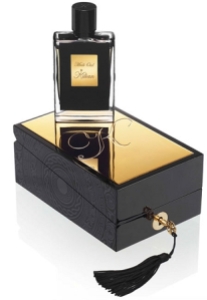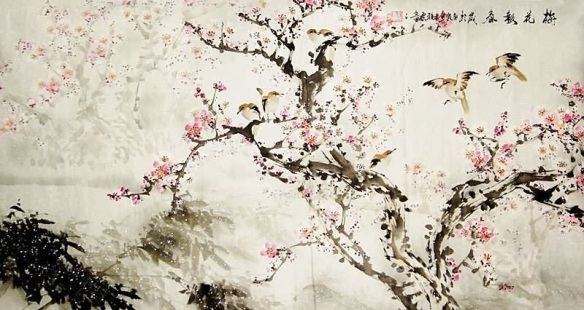Some fragrances are not meant to be practical, versatile, daily experiences. They’re intended to be playful whimsy, a bit of a laugh for those with very deep pockets who can afford to indulge in a rich man’s expensive luxury once in a blue moon. I think that’s perhaps the best way to interpret and approach Apple Brand, the brand-new, recently released perfume from By Kilian. It is a fragrance that really isn’t something practical for most people to wear on a daily basis, unless you want your boss to think you’re an alcoholic and write you up to HR, or a police officer to look at you askance and subject you to a breathalyzer test. In a nutshell, Apple Brandy makes you smell like you were smeared from head to toe with a 1000 plates of Crepe Suzette, and then fell into an oak barrel of cognac after an all-night bender.
Apple Brandy is an eau de parfum that was created by Sidonie Lancesseur, and was released at the end of 2013 as a scent exclusive to Kilian Hennessy‘s new store in New York’s meatpacking district. As the Kilian website description makes clear, the fragrance is both a playful wink at the “Big Apple,” and an homage to his Hennessey cognac heritage:
BRANDY is the term used to designate “Cognac“ when your product is not actually produced in the region of Cognac. In order to recreate this very specific “Cognac” scent that belongs in Kilian’s olfactive memory, Sidonie created an accord combining the smoked wood from the Oak casks – Cedar wood from Texas, white Cedar from China and Labdanum from Spain – and the sugar from the alcohol – Vanilla and Ambroxan.
APPLE is of course a wink to New York, the “Big Apple”. In order to create an “Apple accord” that would not be anecdotal or too simplistic, we created an “Apple liquor” that would blend, rather than contrast, with the “Oak cask” accord.
The complete list of notes is as follows:
Oaken barrel, Texas cedar, Chinese white cedar, Spanish labdanum, Vanilla, Ambroxan.
Apple Brandy opens on my skin with a tsunami of pure, hard alcohol. I absolutely adore boozy notes, but Apple Brandy takes it to a whole new extreme and level, to the point where I actually said, “Whoaa…..” out loud. For an instant, the opening note is of apple — tart, crisp, and tangy like a Fuji — but it is almost immediately covered with cognac. The liqueur is sweetened with an extremely nutty, toffee’d undertone, and has traces of oak and a thick amber as well. It’s nice, but, my God, is there a lot of it! It’s intense, almost to the point of rawness, and beyond any “booziness” that I’ve previously encountered.
The overall effect is exactly like a caramelized apple at a fair, covered in heavy, dense toffee, and then dunked into an oak barrel of alcohol. Perhaps a more precise comparison is to Crepe Suzette, the kind were the apple-stuffed crepes are doused with sugar, then flambéed to a caramelized crisp with copious amounts of brandy. On the side, and all around the plate, is a luxurious crème anglaise sauce of slightly eggy, rich vanilla.
The intensity of the alcohol tsunami softens after 5 minutes, losing some of its rawness and undiluted, hard edge. I still smell like apple Crepe Suzette, but it’s after some of the brandy has been burned off. The first time I tested it, Apple Brandy was actually quite enjoyable as a cozy, warm, dense, boozy gourmand. I liked the ambered apple compote, and I have a particular weakness for crème anglaise sauce. The vanilla isn’t a huge part of the scent on my skin, but the flickers of it at the edge provide a lovely richness that makes Apple Brandy feel like a decadent indulgence. My favorite part, however, is the oak which really evokes oak barrels in the strongest way possible. It rather brilliant, in my opinion.
Apple Brandy is an enormously linear scent with very little change throughout its lifespan. It never transforms in any substantial way, but there are variations of degree that occur after the first hour. The fragrance’s apple tonalities weaken and slowly fade, while the oak barrels become much more dominant. There is something incredibly appealing about the oak when doused by the caramelized apple and the heady, boozy cognac. The wood is extremely smooth, slightly smoky, and rich, adding a layer of depth to the otherwise simplistic scent. The cedar never appears on me in any distinctive way, but I think it works indirectly from the edges, heightening the oak with that subtle smokiness. Really, the wood parts are beautifully done as a counterbalance to the Crepe Suzette and hard liqueur.
At the end of the first hour, Apple Brandy becomes increasingly drier and woodier, particularly as the Ambroxan starts to stir in the base. The synthetic, alas, is a little difficult for me. According to the Good Scent Company‘s olfactory database, Ambroxan’s strength is assessed as “high” or intense, and its aroma is: “ambergris, old paper, sweet labdanum, dry.” Here, it initially adds a warm, sweet, ambered feel to Apple Brandy’s opening, but the dryness takes over about 90 minutes into the perfume’s development. I am much more sensitive to aromachemicals than the average person, and Ambroxan is no exception. The inside of my nose hurts each time I sniff my arm up close, but it’s thankfully not an extreme reaction. As a whole, the aromachemical is well-blended into the fragrance, and doesn’t seem hugely excessive. Still, it’s enough to make Apple Brandy a much drier scent than it was originally.
At the start of the third hour, Apple Brandy is a blur of sweetened booze and woodiness on a very dry base. The caramelized apple compote note is muffled, and soon fades away entirely. The vanilla really never showed itself on my skin outside the opening hour where it was more of a supporting player on the sidelines. As for the other notes, they feel quite indistinct and abstract, lacking delineation and overlapping each other, with only the brandy really dominating. The sillage — which was initially quite intense with only a small amount of perfume applied — now drops, hovering only an inch or so above the skin.
That’s really the sum total of Apple Brandy’s development on my skin. From the third hour until its very end, the fragrance is merely a dry, semi-sweet, woody, oak and cognac bouquet. In its final drydown, Apple Brandy is just an abstract smear of woodiness tinged with some vague sense of booziness. All in all, the perfume lasted just over 9.5 hours, with generally good sillage that only became a skin scent at the start of the 6th hour.
I enjoyed parts of Apple Brandy a great deal, but I have numerous caveats and issues with the scent. I live in a place where I cannot go anywhere without driving, and where the jackbooted police are notoriously aggressive over the smallest thing. I simply would not dare wear Apple Brandy outside my house for fear that — were I ever to get pulled over — the police would think I’d been drinking and driving. Knowing the police here, there is no way they’d believe my protests, “Officer, it’s only my fragrance.” I wince just imagining the scene.
I also would not be comfortable wearing the scent to social occasions either, lest people think I’d been on a bender or had alcohol problems. The smell of liquor is simply so intense from a few dabs, especially in the first two hours, that regular application might smell as though I’d doused my clothes with an entire bottle of expensive brandy. Lastly, as an attorney whose speciality was employment law for big corporations, I would strongly advise against wearing Apple Brandy to any workplace, period. This is the sort of thing that would lead to HR problems, because it really does not convey an appropriate, professional image.
On the upside, Apple Brandy might be a lovely scent to wear in your own home on a chilly, snowy winter’s night. It is the perfume equivalent of having a brandy while sitting before a fire. Yet, even as I write that, my brains whispers the other problems with the scent: it’s linear, it’s a novelty act, and it would get boring very quickly. I enjoyed parts of Apple Brandy quite a bit the first time around, especially before the dryness and Ambroxan kicked in. The second time around, however, I was less enthused and a bit bored. There is a somewhat exhausting quality to the scent; it beats you over the head at first, and you’re quite awed by both the intensity and the novelty. Later, though, its unchanging nature wears you down a bit, and you’d like something a bit different than just the incessant clamour of brandied oak barrels. In short, Apple Brandy’s playful, exuberantly celebratory act is perhaps something best suited to a rare occasion.
All of that brings me to the next issue: price. Apple Brandy costs $235 for a small 50 ml bottle, and unlike many other Kilian fragrances, I don’t see the (relatively) cheaper refill option listed. I personally would never spend $235 on a fragrance I wouldn’t dare to wear outside the house, and to which I’d turn only once in a blue moon as a novelty. On the other hand, in the same way that a really expensive bottle of brandy can be an occasional indulgence, so too is Kilian’s perfume equivalent. Parts of it are truly enjoyable at times.
At the end of the day, price is a subjective matter, so if you have no problems spending $235 to smell like flambéed Crepe Suzette and Hennessy oak barrels, go for it. Just don’t spray on a lot, or you may appear like an alcoholic on a bender. And, for the love of God, don’t drive while wearing Apple Brandy!




